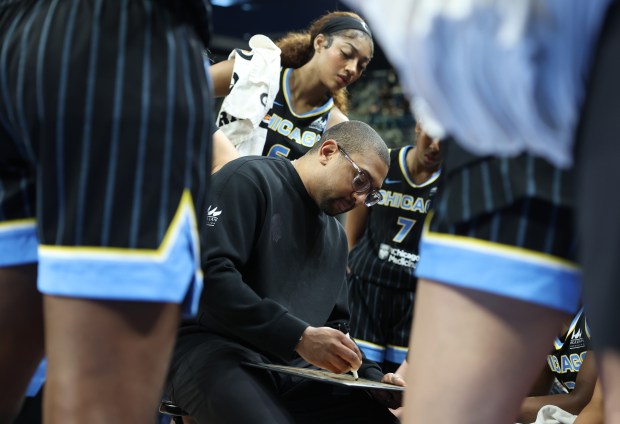By the time August comes with its heat and humidity, many gardeners are ready for a break and so are many plants.
“The growing season is starting to wind down,” said Sharon Yiesla, plant knowledge specialist in the Plant Clinic at The Morton Arboretum in Lisle. “You still need to do some things for your plants, but there are other tasks you can let go.” Here are some tips for somewhat lazier late-summer gardening.
Stop pruning. “Pruning stimulates new growth on trees and shrubs,” she said. If you prune them now, the twigs and bark that sprout in response will be too young and tender to survive the coming cold, dry winter weather. Do prune a branch that is broken or blocking the sidewalk, but save serious pruning for the dormant season, after plants have dropped their leaves, from November through March. Stop shearing yews and other evergreens too.
Keep watering. “Plants will need a water supply until they go dormant,” she said. Regularly water trees and shrubs as well as perennials, vegetables, annuals, and container plants. In hot weather, you may need to water containers and annuals every day, because the plants have grown so large that they will use water up fast. To determine whether you need to water plants in the ground, check for soil moisture by digging down 3 to 4 inches with a trowel and feeling to see if the soil is moist. “Be sure to check even if it’s rained,” she said. “Sometimes it can seem like there was a big downpour, but if you dig, you find the soil is moist only at the surface and bone-dry further down where the plant’s roots are.”
Tidy up. Remove plants that have died and the top growth of spring perennials that have gone dormant, such as bleeding heart. Spruce up perennials: “Just snipping off hosta leaves or other foliage that has gotten tattered or sun-scorched can really freshen up the look of a garden,” she said.
Deadhead. Cut off the spent blooms of annuals and perennials. “Many plants, such as perennial geraniums, salvia, petunias, and marigolds, will respond with new flowers,” Yiesla said. If you deadhead them promptly to keep them from forming seeds, you can often extend their bloom. Be careful not to remove too much foliage with the flowers — the plants need their leaves — but don’t leave awkward-looking bare stems.
Harvest crops. Pick tomatoes, squash and other vegetables as soon as they’re ripe so the plants keep producing. Cut back greens and herbs regularly so that plants such as lettuce, parsley and basil don’t get a chance to flower or bolt. “This is the time to make pesto with all those basil leaves,” she said.
Quit fertilizing. “At this point in the season, we need to stop pushing plants and let them start slowing down,” Yiesla said. Although it’s hard for us to grasp when we’re melting in the heat, winter is coming for plants. “They should be conserving their resources in preparation for dormancy, not putting on new growth,” she said. Only container plants still need occasional fertilizing. They quickly use the available nutrients in their limited soil, and frequent watering also sluices nutrients away.
Don’t worry about holes and spots. Most plants will have accumulated some imperfections by the end of the summer. “They’re usually not important,” she said. If you are concerned about signs of a disease or pest, consult with experts such as the Plant Clinic (mortonarb.org/plant-clinic) to identify it for certain and consider whether it’s worth worrying about.
Postpone planting projects. Cooler weather in September will make planting easier on both you and the plants. If you’ve already planted any perennials, trees or shrubs this year, be extra sure to keep them watered through the end of the season. “They haven’t had time yet to develop much of a root system to collect and store water,” she said.
Assess. While the plants are still lush, take a critical look at your garden. “Make notes and take pictures,” Yiesla said. “Look for spots you can improve next year.” In particular, consider spots where you could add plants for late-summer or fall color or interest. “In April and May, people tend to buy plants that are in bloom at the time, and they often don’t think about August,” she said. “Make some notes and plans now so you can plant for late summer next spring.”
For tree and plant advice, contact the Plant Clinic at The Morton Arboretum (630-719-2424, mortonarb.org/plant-clinic, or plantclinic@mortonarb.org). Beth Botts is a staff writer at the Arboretum.




